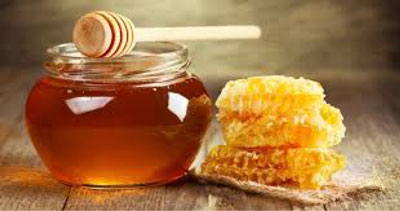Beekeeping and honey production are environmentally favourable non-farming business activities with a huge potential to deliver a diverse range of economic benefits in Pakistan, but unfortunately, this sector is underdeveloped due to a host of factors, including pesticide-damaged nectariferous plants, non-application of current technologies, and a lack of certification resulting in low production.
In Pakistan, each beekeeper produces an average of 11.7kg of honey in 2019, compared to the global average of 20.6kg. Keeping in view a whole range of benefits in this sector, the government has conducted an exclusive analysis to devise a mechanism for improving the quality of honey production, providing livelihood to beekeepers, and sustaining activity through provision of financial resources.
According to the Prime Minister’s Ten Billion Tree Tsunami Program, around 10,000 beekeepers are anticipated to use 300,000 colonies to produce 7,500 metric tonnes of honey per year.
Using modern beekeeping equipment, training on the latest practices, standardisation and certification of the product, and intense marketing, the potential to generate 70,000 metric tonnes of honey from the same harvest could be increased.
Pakistan is home to four different honeybee species, of which three are native to Pakistan and one western. ApisDorsata, ApisCerana, and ApisFlorea are the native species found in a variety of biological zones around the country, while ApisMellifera is a western species. Around 7,000 beekeepers are already raising ApisMellifera in modern beehives.
Pakistan expects to generate an income of Rs35 to Rs43 billion (around $218 to $267 million) and create over 87,000 green jobs from the sale of 70,000 metric tonnes of honey.
The country’s pleasant environment and bee flora provide an ideal potential for expansion of the beekeeping business. Beehive flora can support over 1,000,000 honeybee colonies and can be found in all provinces, including Northern regions, FATA, and AJK.
With the growth of the beekeeping sector, more people are turning to self-employment as commercial beekeepers to supplement their income. Honey production is planned for locations with a lot of wild plantations and agricultural farms.
Chakwal, Mianwali, Attock, Sargodha, and Daska in the Punjab province are great locations for honey bee cultivation, while Karak, Kohat, Swat, Bannu, and Chitral in Khyber Pakhtunkhwa are the best. According to experts, a few places in Sindh, including Thatta, Sujawal, MirpurKhas, Hyderabad, and Gularchi, are suited for honey production.
In 2020, Pakistan’s export of commodity group “0409’’ (natural honey) was worth $9.8 million. Export of 0409 increased by 18.3 percent in 2019. This category accounted for 0.044 percent of overall exports (total merchandise exports from Pakistan in 2020 were $22 billion). In comparison with 2019, the share of 0409 in total exports increased by 0.009 percent (it was 0.034 percent in 2019 and cumulative exports from Pakistan increased by 0.009 percent).
According to a report produced by the China-Pakistan Agricultural and Industrial Information Cooperation (CPAIC), Pakistan’s honey productivity has the potential to increase tenfold.
According to the Food and Agriculture Organization (FAO) figures, roughly 390,000 people in Pakistan are active in beekeeping and they annually produce around 4,000 tonnes of honey.
According to a statement from the Prime Minister’s Office (PMO), if the current production technology and standard production techniques are used, the country’s honey production is estimated to increase to 70,000 tonnes per year, creating over 87,000 green jobs. However, due to low yield and low prices, the full potential of this lucrative business has yet to be realised.
China, which has been the world’s top honey producer for many years, is prepared to offer its large-scale apiculture, nectariferous plant growing, bee breeding, and other skills to Pakistan.
According to a Pakistani industry insider, exports currently account for only 20% of overall production. If the industry is modernised, sales will increase by a factor of 20. While introducing Chinese techniques and production methods, Pakistan can sell by-products such as bee milk, beeswax, and propolis to the Chinese market, which have significantly higher value than honey.
Research conducted by the China-Pakistan Agricultural and Industrial Information Platform (CPAIC) has advised that the government should intervene in beekeeping areas, improve the industry value chain, and connect beekeepers to regional and national markets.










